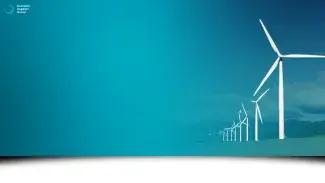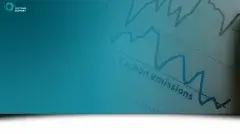The Carbon Border Adjustment Mechanism (CBAM)
The Carbon Border Adjustment Mechanism (CBAM) is one of the biggest green supply chain initiatives in the EU. Under this mechanism, you must assess embedded emissions in selected commodities during the import process, and offset them with CBAM credits (a special type of carbon credit).
The commodities included in CBAM are:
- Aluminium
- Cement
- Electricity
- Fertilisers
- Hydrogen
- Iron and steel
CBAM complements the EU Emissions Trading System (EU ETS), which works to cap and offset emissions from selected high-emission sectors within the border.
Currently, the mechanism is in its transition phase, which began on 1st October 2023 and will end on 31st December 2025. During this time, you need to process your evaluations and submit quarterly CBAM reports, but you do not yet need to pay for the carbon offsetting.
[Related: What to include in CBAM reports]
From 1st January 2026, you need to submit an annual report through a CBAM-authorised declarant if you do not hold the authorisation yourself. Your first return will be due by 31st May 2027.
Although in its infancy, there are already discussions on expanding the CBAM initiative by 2030. The aim is to include more than 50% of emissions from the EU ETS sectors by 2034.
It is also relevant to know that the UK intends to implement CBAM by 2027.
Electricity market design
The redesign of the electricity market is a core element of the Renewable Energy Directive – a green supply chain initiative in the EU that aims to reduce both emissions and costs.
By incentivising and encouraging clean energy production domestically, the EU can create a more resilient supply chain. Recent events, such as the conflict in Ukraine, have underscored the importance of reducing dependency on external energy sources.
As one of the CBAM commodities, electricity supplied from outside of the EU will soon become more expensive. This is another reason for domestic suppliers to invest more in green energy, as well as fossil-free alternatives and energy storage to account for variable production.
It is expected that the energy produced from green sources will grow from 37% in 2020 to over 60% in 2030. This will mean a growth of at least 47.5% in two decades, with only 12.5% of the EU’s electricity coming from renewable sources in 2010.
The European Critical Raw Minerals Act
To address dependency on single countries for essential minerals, the European Critical Raw Minerals Act focuses on ensuring stability in mineral procurement. Key minerals include:
Gallium
Gallium is an essential component in solar panels, and over 98% of the world’s supply currently comes from China. Last year, China imposed restrictions on gallium and articles thereof last year, with an export licence required for international sale. Germanium, another mineral used in superconductors, was also restricted.
Lithium, cobalt
Used to create batteries, lithium and cobalt are mostly procured from the southern hemisphere:
Lithium – 77% of the supply is from Australia and Chile.
Cobalt – 63% of the supply is from Congo.
Boron
Used in wind technology, boron is mostly exported from China and Hong Kong. Canada and the United States also export this critical mineral, but the Asian countries produce more than five times more.
Tungsten
An essential ingredient in many superalloys, tungsten is needed to build durable electrodes, heating elements, and emitters. The top exporters in 2022 were China, Germany, and the United States.
Although Germany is an EU country, China’s reserves of tungsten are far larger, and the longevity of EU production is a concern.
What does the European Critical Raw Minerals Act aim to do?
The act has set out targets for the percentage of supply that should be reached by extraction, processing, and recycling of these minerals. Additionally, this green supply chain initiative in the EU has determined that no more than 65% of the EU’s annual needs should come from one country.
The EU Deforestation Regulation (EUDR)
Similar to CBAM, the Regulation on Deforestation Free Products (EUDR) is a green initiative in the EU which focuses on reducing the environmental impact of consumers by restricting external suppliers who do not adhere to certain standards. It targets environmental impact by regulating commodities linked to deforestation.
Some of the monitored products are cattle (beef) ,cacao, coffee, palm oil, rubber, soy, and wood/timber. As a result of regulating these commodities, the EU minimises its contribution to global deforestation.
The regulation entered into force on 29th June 2023, and is currently in an 18-month transition period. From 30th December 2024, the regulation will be in effect. *
*Update: EU Commission has proposed a 12-month postponement to the adoption of the regulation.
Note that there are longer transition periods for small and microbusinesses (24 months), and for different timber products (18-54 months, depending on length of production).
The Forced Labour Regulation
At the end of April, the EU Parliament voted in favour of a new regulation to prohibit the sale, import, and export of goods produced with forced labour. This marks a significant step in the fight against global human rights abuse.
As one of several new, non-fiscal pieces of legislation which is enforceable by customs authorities, this law will empower both the member states and the European Commission to scrutinise and investigate goods, supply chains, and manufacturers suspected of using forced labour.
Under the regulation, any product confirmed to be made through forced labour will be banned from the EU market – with existing stock required to be withdrawn, recycled, or destroyed.
Investigations will be prompted by reliable information from international organisations, whistleblowers, and cooperating authorities, focusing particularly on industries and regions known for state-imposed forced labour.
The regulation now awaits formal approval by the EU Council and will be enforceable within three years, signalling a progressive shift towards ethical trade practices within the EU and potentially influencing global labour standards.
As with CBAM and the EU Deforestation Regulation, the Forced Labour Regulation continues to put the responsibility on you as a trader to perform due diligence on your suppliers and other trading partners.
How you can work with these green supply chain initiatives in the EU
As businesses, it is imperative to proactively engage with these green supply chain initiatives in the EU so that you are not left unprepared or struggling.
Here’s how you can effectively work with these initiatives:
Prioritise emissions and environmental reporting
Improving emissions and environmental reporting is a key objective for many businesses in the EU and globally. ESG and CSR reports are becoming more mainstream, and CBAM reports are now a requirement if you import CBAM commodities.
Embrace digitalisation to improve data accessibility
Digitalisation in customs and across the logistics industry means that you can now access emissions data for your supply chain in many cases. If you speak to your forwarder, they may already have technology working with their supply chain management software which calculates your freight emissions.
Prepare for the expansion of green initiatives
In the event that CBAM or one of the other green supply chain initiatives in the EU expands into your industry, you should be prepared. This means working with your suppliers to obtain emissions data, calculating your embedded carbon, and understanding what your obligation to submit reports and pay for carbon credits would do for your margins.
Need help understanding CBAM and the EUDR?
Customs Support is here for you. As a provider of customs and trade solutions throughout the EU, we work with businesses like yours to understand their CBAM and EUDR obligations and prepare their paperwork. Contact us for more information.














